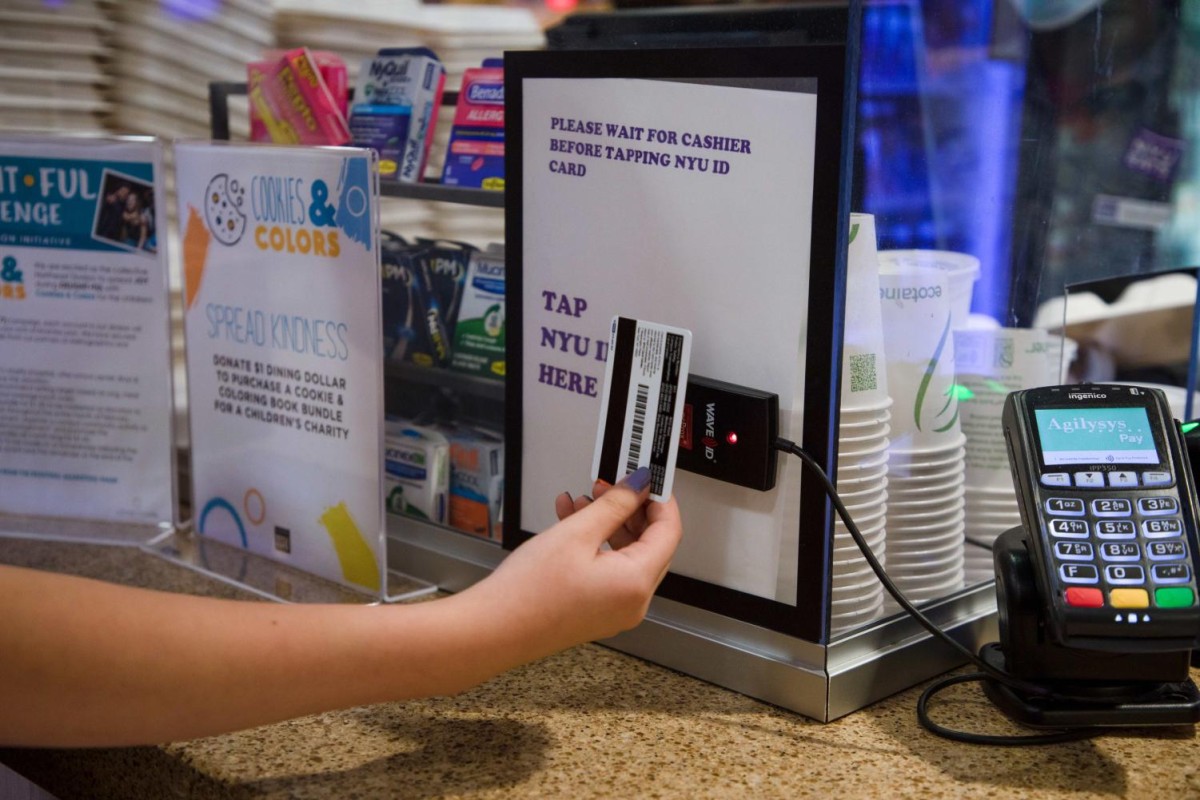As I walk into NYU’s dining halls near the end of the semester, I’m confronted by the sight of dejected students: some spending a $14 meal swipe on just a drink and a bag of chips, and others piling their plates high with food they have no hope of finishing. This is the everyday reality of NYU’s inflexible meal plan program.
At NYU, first-years are not only expected to adjust to college life, but also to decipher the university’s confusing dining hall system. According to the university’s dining guide, first-years in residence halls must select their meal plan before even arriving at NYU. These plans bind them to at least 200 meal swipes a semester for those living in residence halls without a kitchen, and 120 meal swipes a semester for those in a residence hall with a kitchen.
NYU’s meal plans confuse first-years who might not yet have established routines, not only contributing to end-of-semester stress as they rush to use their swipes, but also perpetuating excess food waste.
“I have so many meal swipes that I find myself getting multiple entrees and trying to force-feed myself,” Indrasena Reddy, a first-year with 92 meal swipes left, said. “I feel l’ve bitten off more than I can chew with these meal swipes — quite literally.”
In a poll I conducted on Nov. 28 with students in the NYU 2027 Snapchat community — which requires members to verify their university email to join — 228 out of 336 students said they had more than 70 meal swipes left. If a student were to leave campus on Dec. 18, they would have to spend an average of 3.2 meal swipes a day to break even, including on weekends when several dining halls close early. That means eating at dining halls for every meal each day, or wasting hundreds of dollars worth of swipes that don’t roll over.
At NYU, first-years only have the option to reduce their meal plan to the minimum of 120 meal swipes if they live in one of the few residence halls with kitchens. Even if eligible first-years decide to change their plan, the refund they receive decreases each day they wait to do so. These policies work against new students who are still finding their footing in the city.
“I changed my plan on the last day and didn’t get as much money back as I could have,” said first-year Asim Dulgeroglu. “I got 100 fewer dining dollars and 15 less meals, and my refund was still low. It felt like a money grab.”
NYU’s Swipe it Forward program seeks to address food insecurity by allowing students to donate excess meal swipes. Unfortunately, the program is poorly advertised, and recent restrictions have limited meal redemptions to just once a week. The program only allows students to donate three meal swipes per day, which doesn’t help those who still have hundreds of excess swipes left at the end of the semester.
Maya Mohanti, a first-year with 108 meal swipes left, said they were willing to “give 50 [meal swipes] at a time,” but were restricted by the three-swipe limitation of the program.
It’s hard enough for first-years to adjust to the city, and figuring out eating habits takes longer than just a week. By binding them to these preset plans, NYU is setting its incoming students up for a stressful and overwhelming end to the semester. If the university intends to continue requiring first-years to purchase a meal plan, it needs to give them more flexibility to change them, allow them to donate more and let them roll over.
By making these simple adjustments, NYU would place students’ money back into their pockets and make going to the dining halls feel like a helpful choice instead of a meal-swipe-bound prison.
WSN’s Opinion section strives to publish ideas worth discussing. The views presented in the Opinion section are solely the views of the writer.
Contact Jack Sloan at [email protected].























































































































































